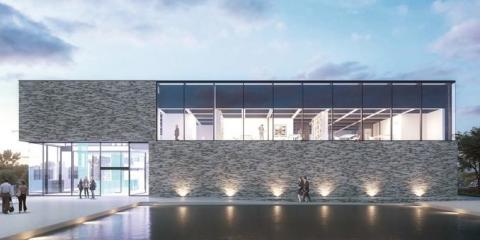Building on tomorrow’s surgery

On Tuesday 18 September, the small town of Melle in Belgium is officially transformed into the world’s no. 1 robotic surgery centre. Belgian Innovation Minister Philippe Muyters opened Orsi Academy, the brainchild of urologist Alexandre Mottrie and doctor Geert Vandenbroucke. Each year, about 3,500 surgeons can come to this high-tech knowledge and innovation centre and learn to work with the very latest techniques.
Jan De Nul Group is very proud having played a major part in realising this historic moment. Over the past 20 months, Jan De Nul assumed the overall coordination of this project along the E40 highway, from cutting the first sod up to the final lick of paint. Given the limited execution term for this architecturally challenging project, planning was crucial.
As this project aims at an international audience, it is for a global player such as Jan De Nul Group a fine reference. The project allowed Jan De Nul not only to show its expertise in the construction and overall architectural coordination of large, high-tech buildings but also to help building on tomorrow's surgery.
Visible high-precision work
The building was designed by VK Architects & Engineers and has an industrial look. The architect set strict aesthetic requirements to the exposed concrete: the use of setting holes or joints was prohibited. Therefore, Jan De Nul opted for an execution method in which double prefabricated slabs were cast on site in prefabricated hollow walls with closed bulkheads, which – as a bonus – was also beneficial to the tight project planning.
Also the beam grid roof structure was executed entirely in exposed concrete. Because the structure remains visible after the finishing works and we needed a lot of recesses for leading through cables and pipes, Jan De Nul also executed the concrete works on site using in-house designed and built formwork.
Ecological principles
The air conditioning of the building is ensured by a soil-based thermal energy storage field of 2,200 m², heat pumps and an electrical installation actuated by solar panels on the roof. As a result, connecting to the gas network was unnecessary.